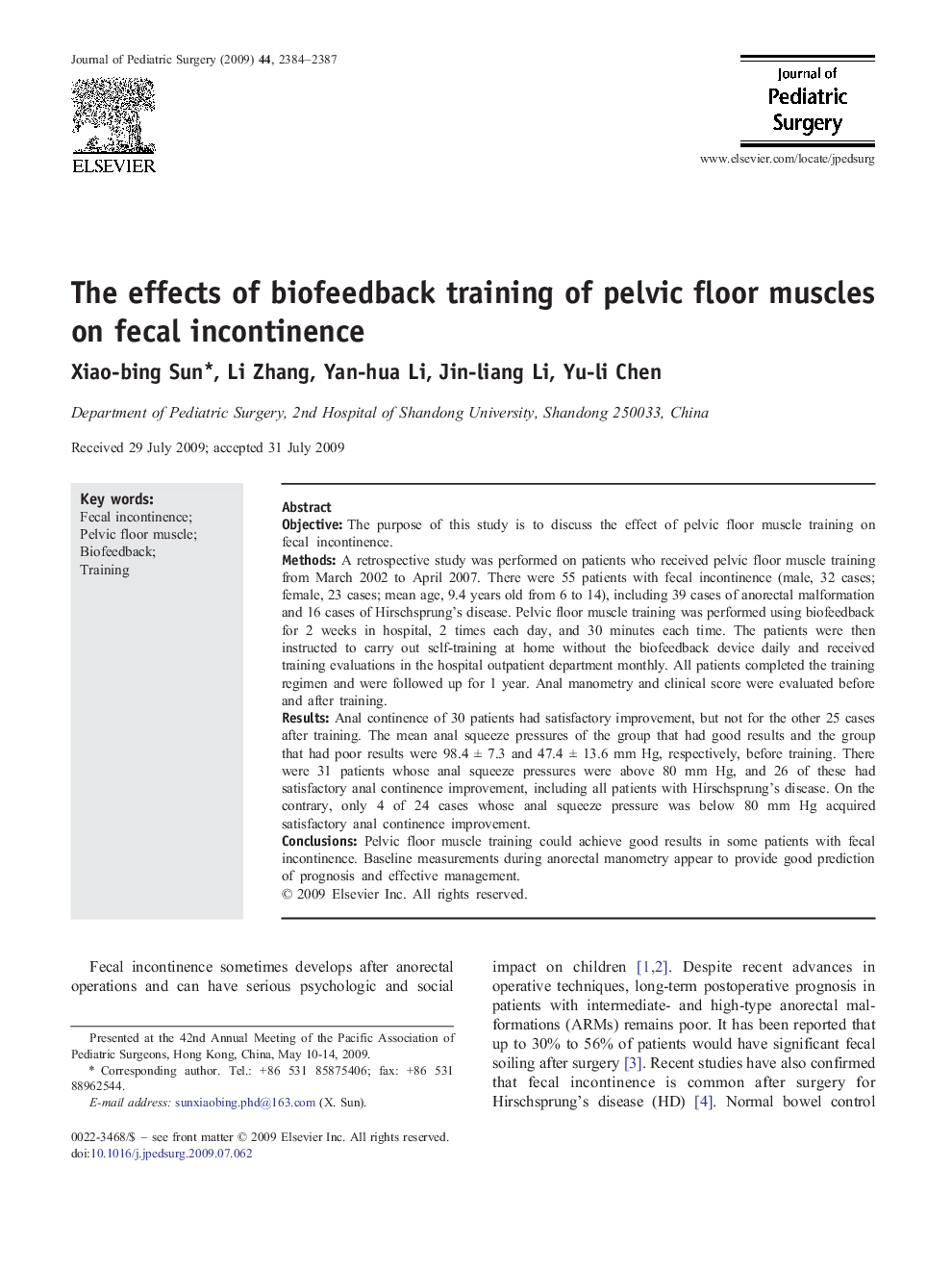| Article ID | Journal | Published Year | Pages | File Type |
|---|---|---|---|---|
| 4157838 | Journal of Pediatric Surgery | 2009 | 4 Pages |
ObjectiveThe purpose of this study is to discuss the effect of pelvic floor muscle training on fecal incontinence.MethodsA retrospective study was performed on patients who received pelvic floor muscle training from March 2002 to April 2007. There were 55 patients with fecal incontinence (male, 32 cases; female, 23 cases; mean age, 9.4 years old from 6 to 14), including 39 cases of anorectal malformation and 16 cases of Hirschsprung's disease. Pelvic floor muscle training was performed using biofeedback for 2 weeks in hospital, 2 times each day, and 30 minutes each time. The patients were then instructed to carry out self-training at home without the biofeedback device daily and received training evaluations in the hospital outpatient department monthly. All patients completed the training regimen and were followed up for 1 year. Anal manometry and clinical score were evaluated before and after training.ResultsAnal continence of 30 patients had satisfactory improvement, but not for the other 25 cases after training. The mean anal squeeze pressures of the group that had good results and the group that had poor results were 98.4 ± 7.3 and 47.4 ± 13.6 mm Hg, respectively, before training. There were 31 patients whose anal squeeze pressures were above 80 mm Hg, and 26 of these had satisfactory anal continence improvement, including all patients with Hirschsprung's disease. On the contrary, only 4 of 24 cases whose anal squeeze pressure was below 80 mm Hg acquired satisfactory anal continence improvement.ConclusionsPelvic floor muscle training could achieve good results in some patients with fecal incontinence. Baseline measurements during anorectal manometry appear to provide good prediction of prognosis and effective management.
